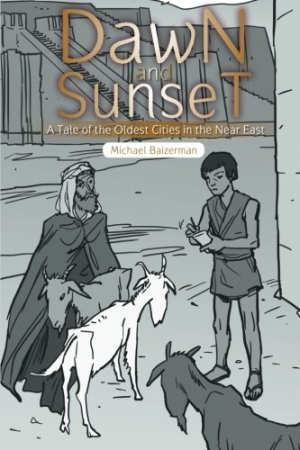Dawn and Sunset
A Tale of the Oldest Cities in the Near East
Dawn and Sunset is a well researched, nicely written, organized account of early Mesopotamian history.
Some of the world’s first cities emerge, prosper, and decline over the course of several millennia while their citizens chart remarkable advances in art, linguistics, religion, politics, warfare, and other areas. Michael Baizerman explores these developments in Dawn and Sunset: A Tale of the Oldest Cities in the Near East, a scholarly look at the history of ancient Mesopotamia.
Baizerman begins with a brief explanation of the region’s history and geography, and an outline of its different historic periods. He argues that the twelve things required for a settlement to be considered urban were all present in Mesopotamian cities. These include a dedicated religious site for worship and festivals; a temple social hierarchy with priests, administrators, worshipers, and slaves; industrial, commercial, scientific, and cultural centers; a system of record-keeping; a legal center with courts and laws; a centralized government; a military; a “melting pot” of different ethnicities; and a welfare safety net.
A series of sections in the book individually delve into Mesopotamian advances in the areas of writing, agriculture, foreign trade, laws, and warfare. The development of sailing boats, the pottery wheel, the use of irrigation, wheeled carts, kiln-fired bricks, and writing instruments all underscore the region’s growing sophistication.
Dawn and Sunset is a good, fundamental summation of Baizerman’s long-time academic focus. The book contains a wealth of information. However, much of the in-depth research was done on the Internet, and Internet sources are heavily cited. More print sources might have extended the book’s usefulness for students and other scholars, as web-based sources can be fleeting.
The author does include about three dozen titles for “further reading” at the end of the book, but it is not clear whether or how, in the writing of the text, those were drawn from, either directly or indirectly.
The book also could have been improved with additional quality illustrations. One small black-and-white map, four black-and-white stock images (one of which doubles as the cover art), and a handful of simple charts—all rudimentarily designed—break up 250 pages of text. Sections about art, in particular, would have benefited from illustrative accompaniments.
Internet links to some images are listed in chapter notes. However, some of those links are exceedingly long. Readers of an e-book can easily cut and paste them into an Internet browser, but readers of the printed book will have to retype them, which limits their usefulness.
Further culling of the book’s abundant amassment of facts to focus on the most important would also have improved readability.
Dawn and Sunset is a well researched, nicely written, and organized account of early Mesopotamian history.
Reviewed by
Karyn Saemann
Disclosure: This article is not an endorsement, but a review. The publisher of this book provided free copies of the book and paid a small fee to have their book reviewed by a professional reviewer. Foreword Reviews and Clarion Reviews make no guarantee that the publisher will receive a positive review. Foreword Magazine, Inc. is disclosing this in accordance with the Federal Trade Commission’s 16 CFR, Part 255.

